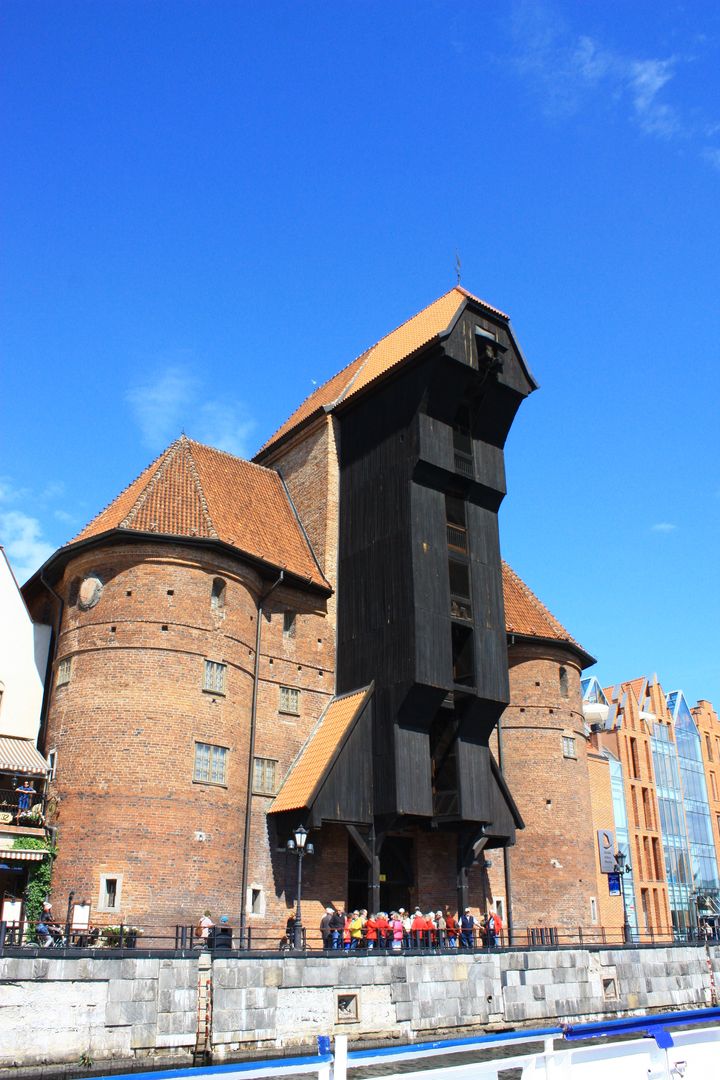Żuraw in Gdańsk
6.73

Overview
The Crane Gate, also known as Krantor, is a historic port crane located over the Motława River in Gdańsk, at the end of Szeroka Street. It is one of the branches of the National Maritime Museum in Gdańsk and the largest and oldest preserved port crane in medieval Europe, making it a significant element of the region's cultural heritage. The history of the Crane dates back to 1363, when a crane of unknown appearance existed at this site. In 1367, a mention of a *caranum* crane was preserved. Between 1442 and 1444, the current structure was built, characterized by two massive brick towers and a wooden lifting mechanism. The entire structure is designed in the Flemish Gothic style, giving it a unique character. In the early 17th century, the Crane lost its military significance, and over time the towers were inhabited, leading to the establishment of craft workshops and the remodeling of the interior. The Crane played a key role in port transport, serving for loading goods and masts, and its mechanism was based on two pairs of treadwheel drums. Human power was used by people stepping inside these drums, which was an innovative solution for that time. In 1945, the crane was severely damaged by fire during the capture of Gdańsk by the Red Army, but parts of the walls survived. After reconstruction in the late 1950s, the Crane was entered into the register of monuments on December 18, 1959. Between 2022 and 2024, the facility underwent comprehensive modernization, which will impact its future functioning as a tourist and cultural attraction. The Crane is not only an important element of Gdańsk's port landscape but also a valuable symbol of the region's history and Gothic architecture.
Location
2025 Wizytor | All Rights Reserved